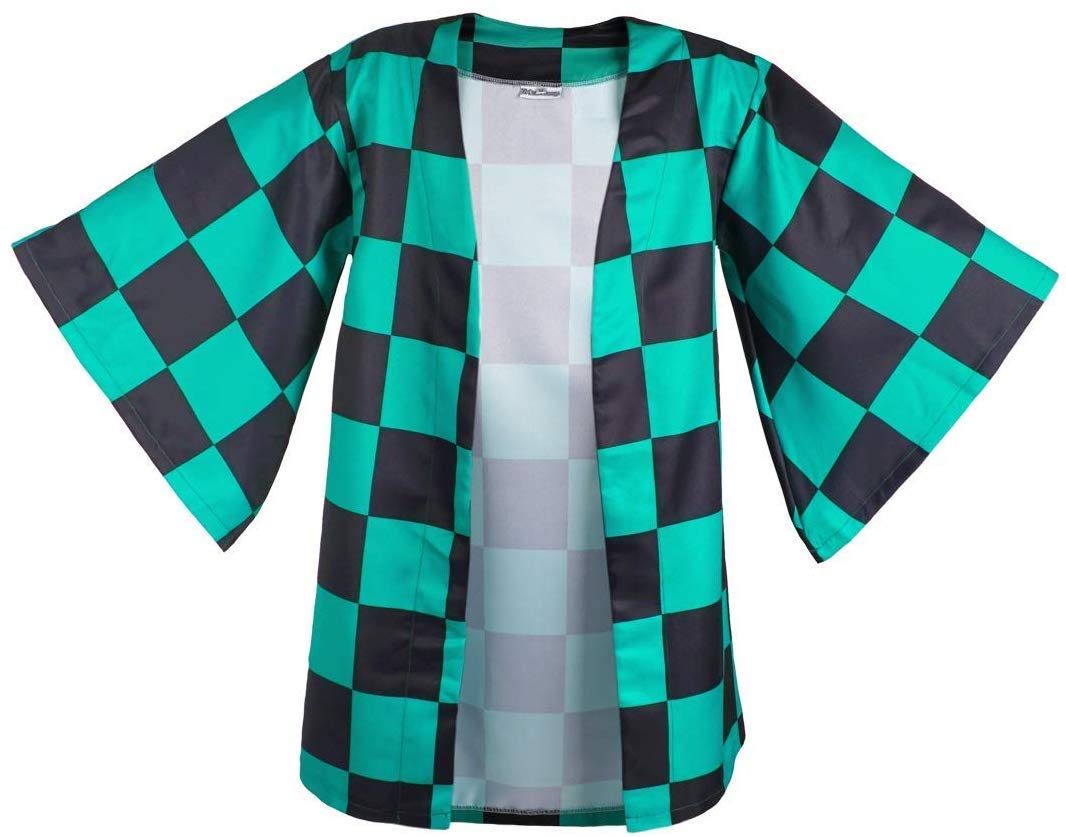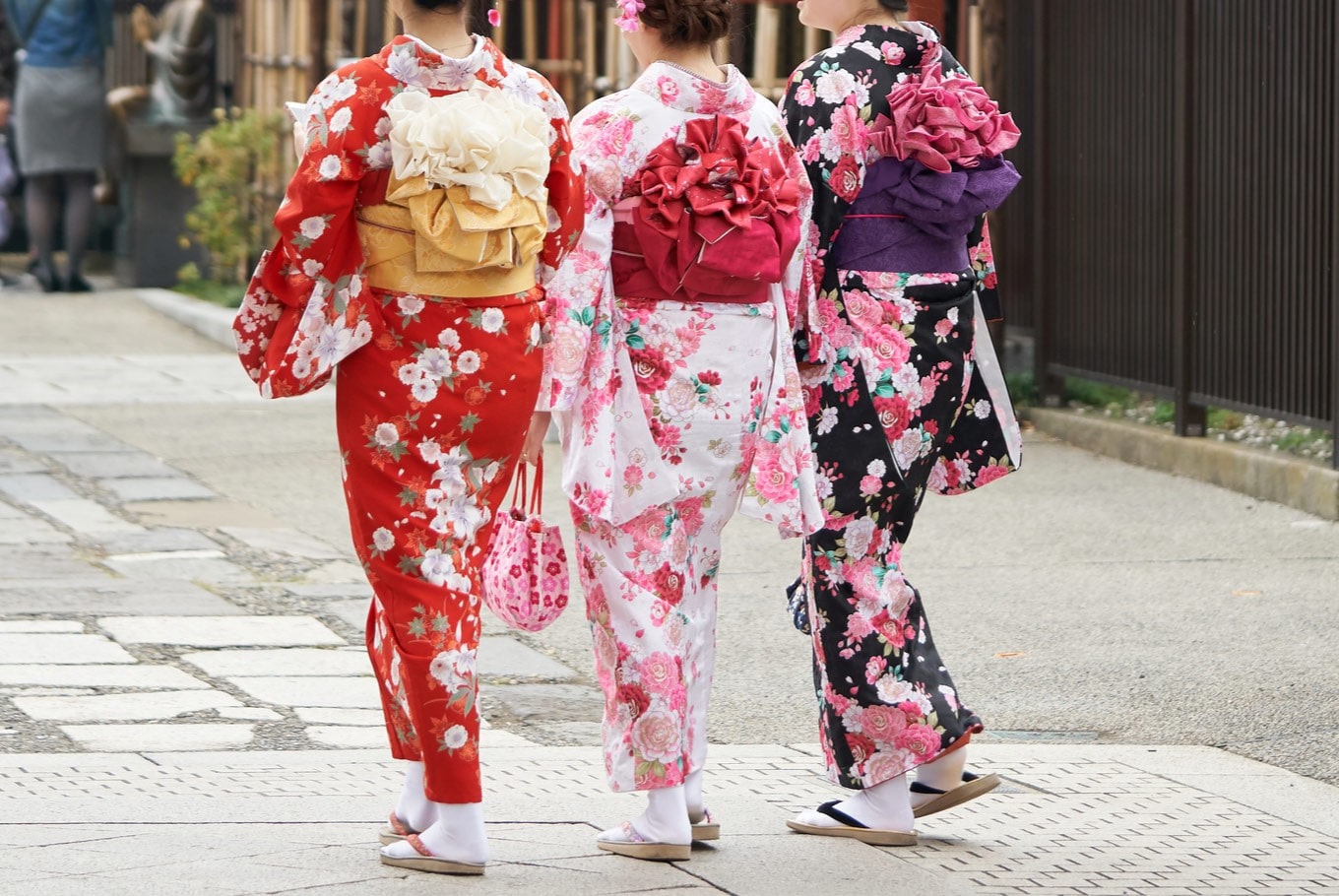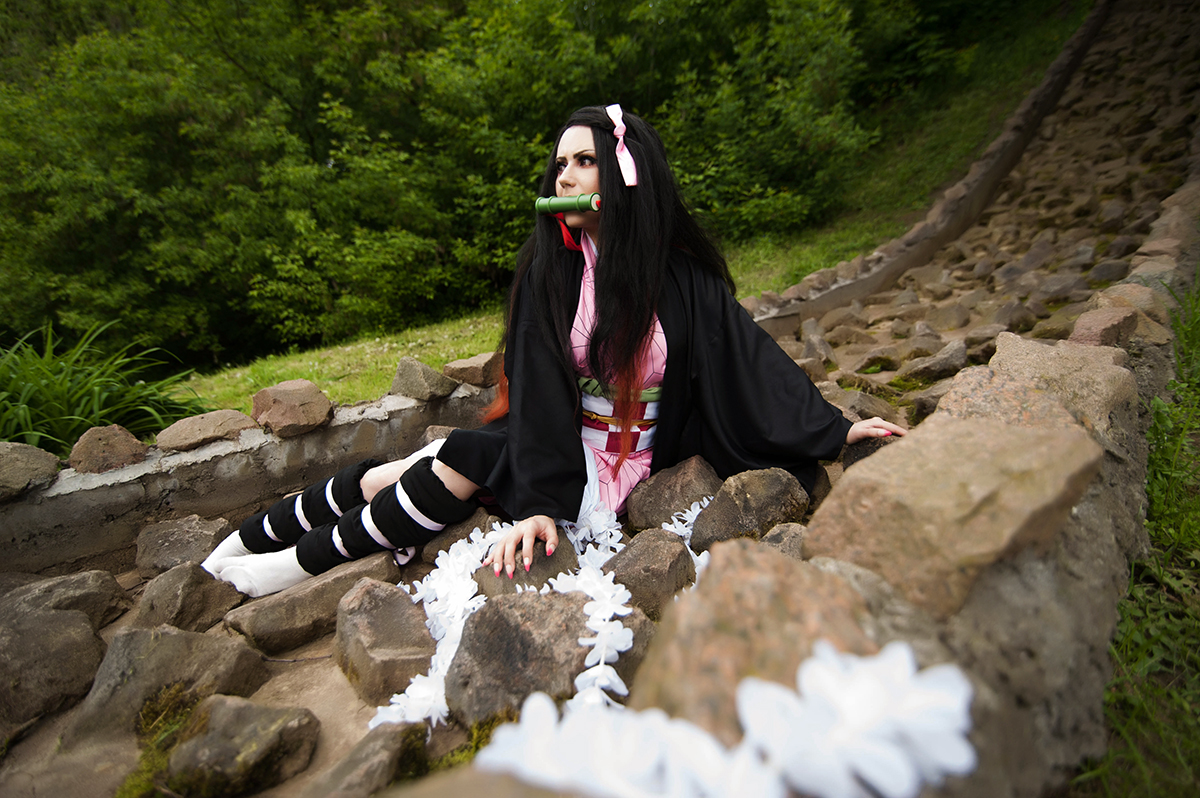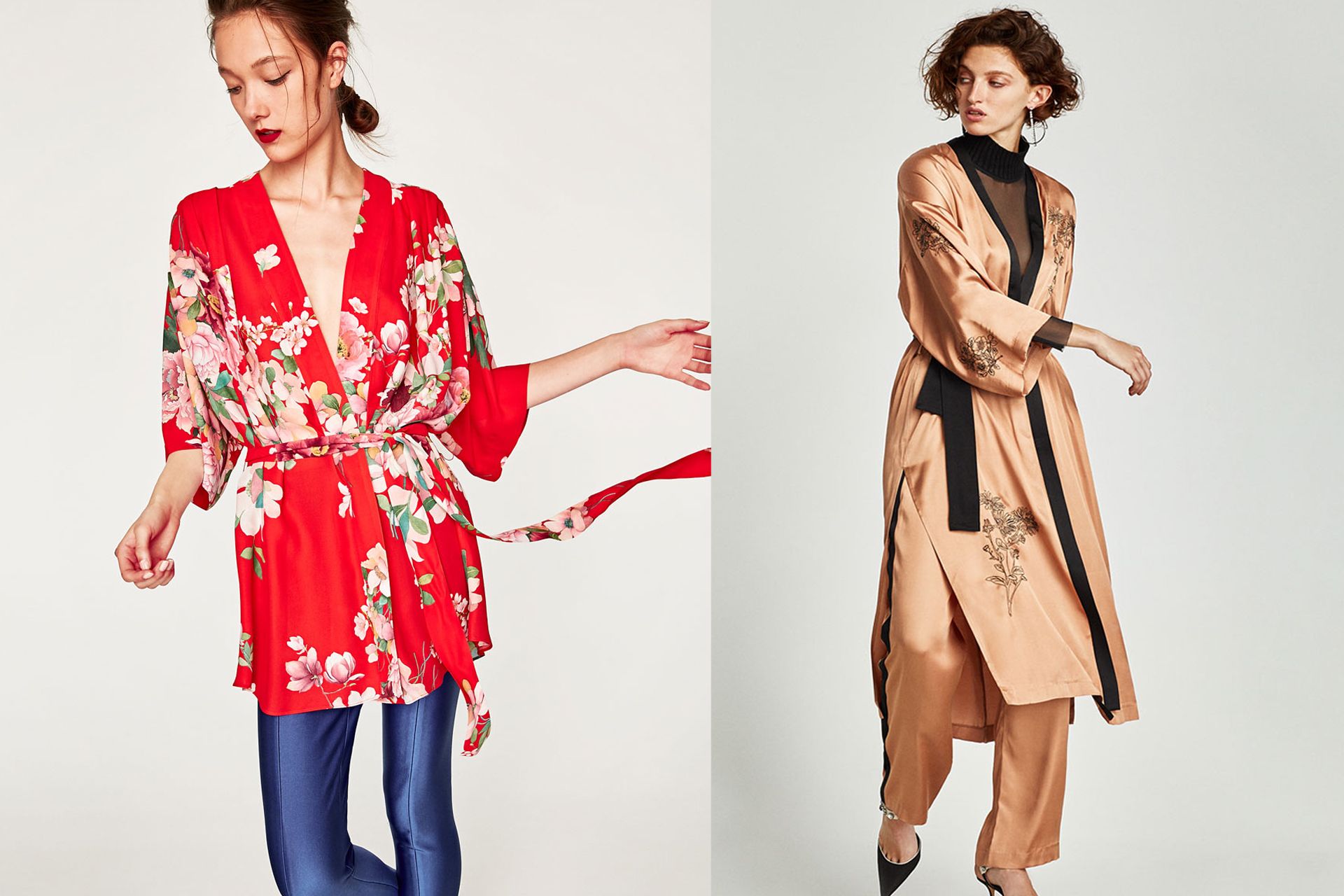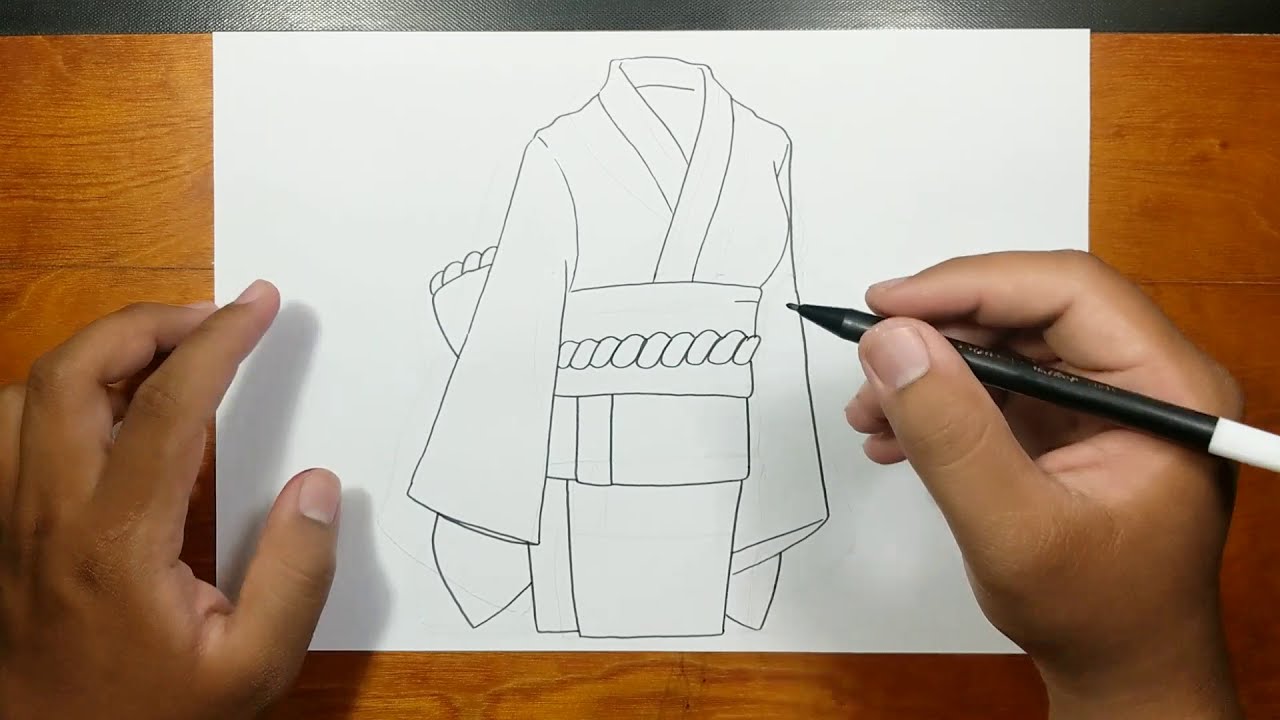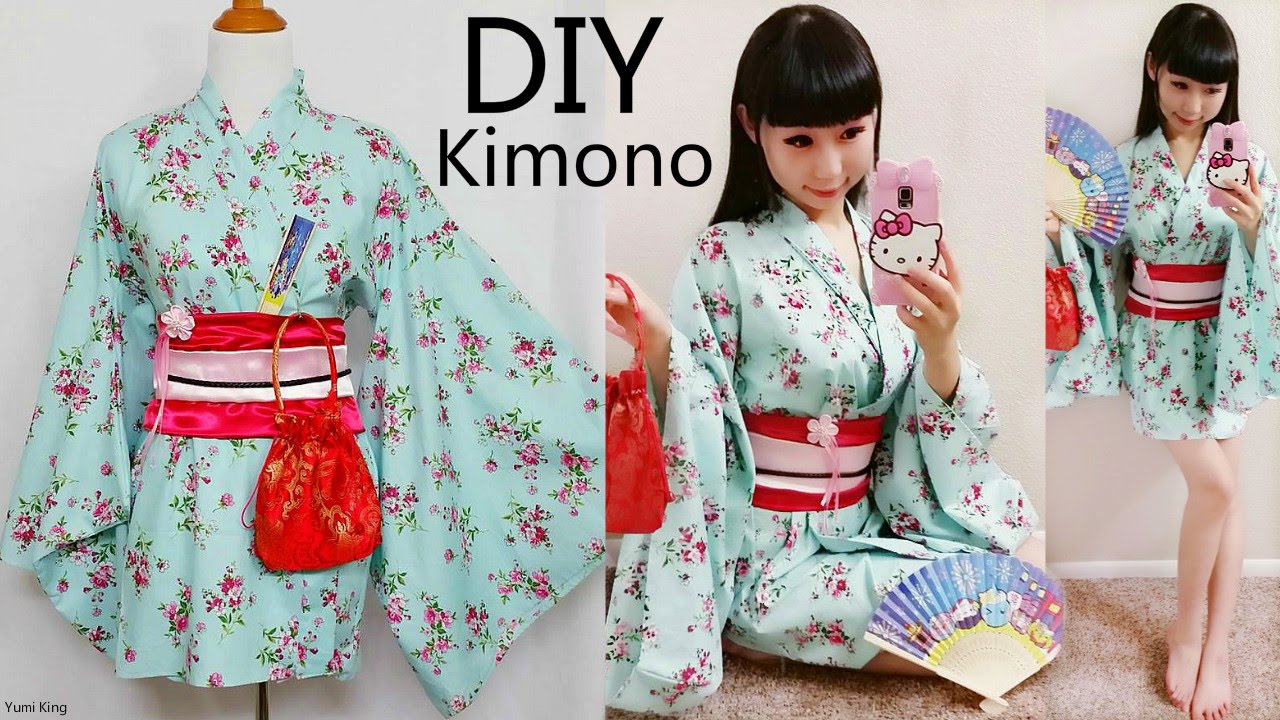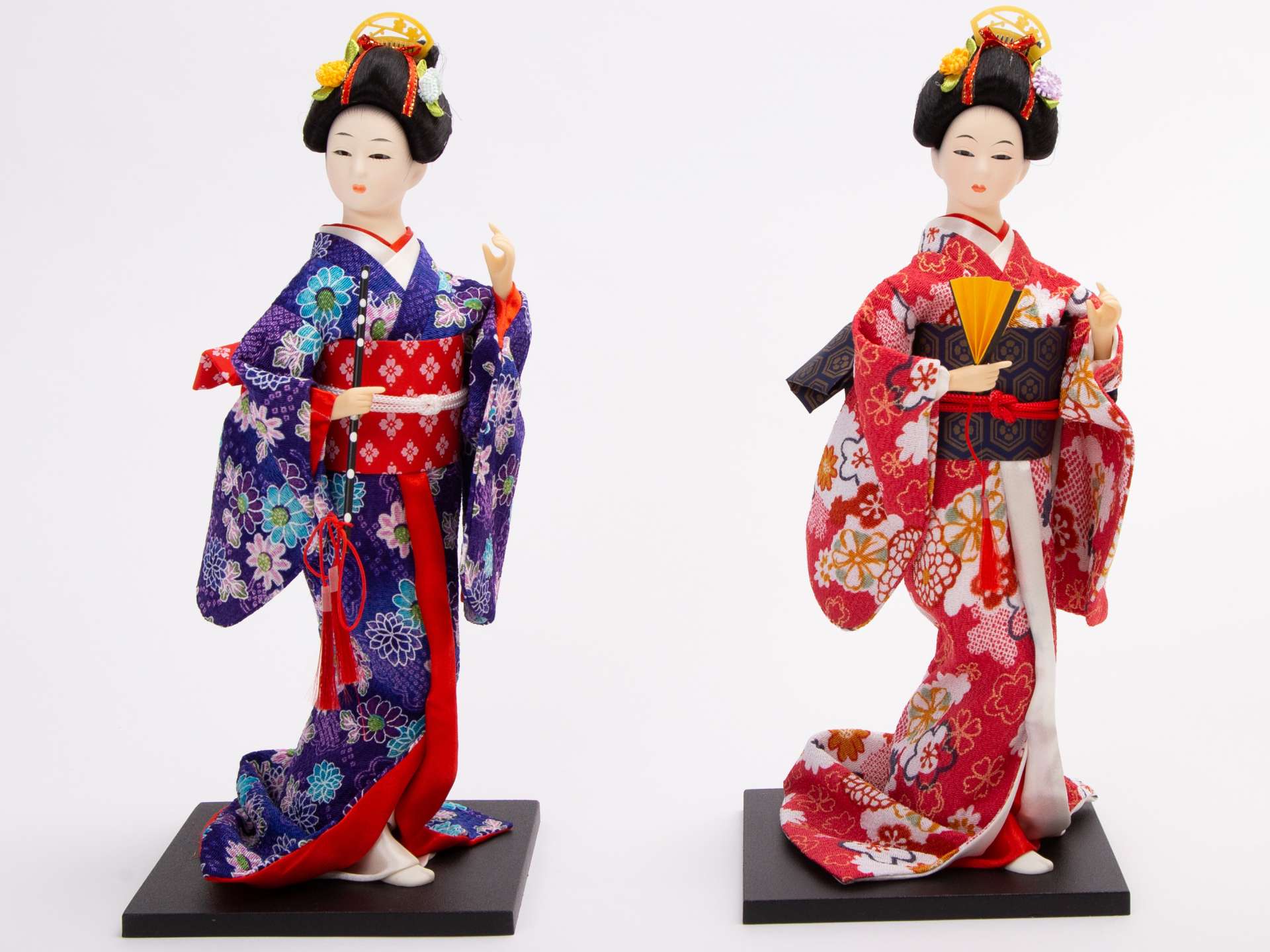Home>Latest Posts>What Is The Kimono
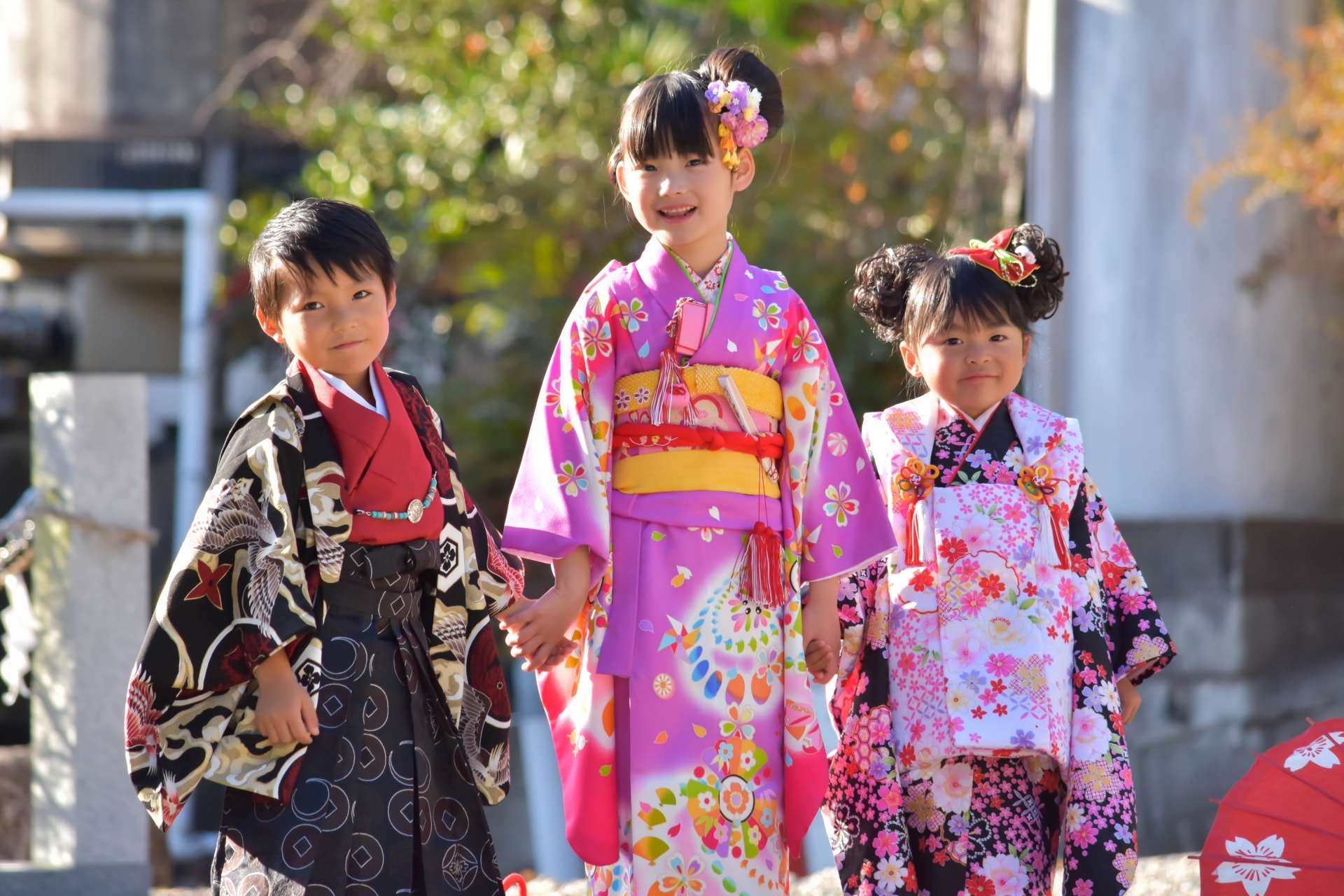

Latest Posts
What Is The Kimono
Modified: September 23, 2023
Discover the different types of underwear in the kimono fashion. From traditional styles to modern designs, explore the versatility and beauty of kimono-inspired lingerie.
(Many of the links in this article redirect to a specific reviewed product. Your purchase of these products through affiliate links helps to generate commission for Under-tec.com, at no extra cost. Learn more)
Table of Contents
Introduction
The kimono, a traditional Japanese garment, is a significant part of Japanese culture and fashion. With its elegant and timeless design, the kimono has captivated people around the world for centuries. Served as the national dress of Japan, the kimono carries rich historical and cultural significance.
Derived from the word “kiru” meaning “to wear” and “mono” meaning “thing,” the kimono is more than just a piece of clothing. It is a representation of Japanese aesthetics, craftsmanship, and attention to detail. The kimono embodies the principles of elegance, simplicity, and respect that are deeply ingrained in Japanese culture.
The origin of the kimono dates back to the Heian period in Japan, which was between the 8th and 12th centuries. Initially, the kimono was influenced by Chinese Hanfu, a loose-fitting garment. However, over time, the kimono evolved into a distinct form with its own unique characteristics.
Traditionally, the kimono was made from silk, a luxurious and highly prized fabric. The construction of a kimono involves meticulous attention to detail and craftsmanship. It consists of several parts, including the main body, sleeves, collar, and obi (a wide belt). The intricate designs, patterns, and colors used in kimono production reflect the cultural and historical motifs of Japan.
While the kimono is deeply rooted in tradition, it has also adapted to modern times. Today, people in Japan primarily wear kimono on special occasions, such as weddings, festivals, and tea ceremonies. However, there has been a resurgence in the popularity of kimono as a fashion statement and a way to express individual style.
In recent years, there has been a growing interest in kimono fashion worldwide. People outside of Japan have embraced the beauty, grace, and versatility of the kimono, incorporating it into their wardrobes for various events and celebrations.
In this article, we will explore the origin, structure, types, and symbolic meaning of the kimono. We will also delve into the accessories that accompany the kimono and discuss its role in modern-day society. Finally, we will address the controversial issue of cultural appropriation surrounding the kimono.
Origin and History
The kimono has a fascinating history that spans over a thousand years, tracing its roots back to the Heian period in Japan. During this time, the kimono was heavily influenced by Chinese fashion, particularly the loose-fitting garments known as Hanfu.
As Japan began to develop its own unique culture and identity, the kimono underwent significant changes in design and style. It evolved into a distinct form that reflected the values and aesthetics of Japanese society.
In ancient times, the kimono was primarily worn by the nobility and samurai class. It was considered a symbol of status and played a vital role in expressing one’s social standing. The design, fabric, and colors of the kimono were often regulated by sumptuary laws, which dictated the appropriate attire for each social class.
During the Edo period (1603-1868), the kimono became more accessible to the common people as social restrictions loosened. It became a staple garment for everyday wear, with different styles emerging to suit various occasions and seasons.
The construction of a traditional kimono involves precise measurements, intricate sewing techniques, and careful attention to detail. The fabric is cut into rectangular panels and sewn together, with the sleeves and collar attached separately. The length and width of the kimono are determined by the wearer’s height and body shape.
One of the most iconic features of the kimono is the obi, a wide belt that is tied around the waist. The obi not only serves as a decorative element but also provides structure and support to the kimono. It can be tied in a variety of intricate knots and styles, with different patterns and colors.
Throughout history, the design and motifs used in kimono patterns have evolved to reflect cultural and historical shifts. Traditional motifs include cherry blossoms, waves, bamboo, and cranes, each with its own symbolic meaning. These motifs often convey messages of good fortune, prosperity, and long life.
Today, the kimono continues to be cherished as a symbol of Japan’s rich cultural heritage. While it may not be commonly worn in daily life, it holds a special place in Japanese society for ceremonial events such as weddings, tea ceremonies, and festivals.
In the next section, we will explore the structure and design of the kimono in more detail, highlighting its unique features and craftsmanship.
Structure and Design
The kimono is known for its distinctive structure and meticulous design, which make it an exquisite and elegant garment. Understanding the various components of the kimono can help us appreciate its beauty and craftsmanship.
The basic structure of a kimono consists of the main body, sleeves, collar, and obi. The main body of the kimono is constructed using rectangular panels of fabric. The length and width of these panels are carefully measured and tailored to fit the wearer’s body shape and height.
The sleeves of the kimono, known as “sode,” are wide and allow for freedom of movement. They are attached at a 90-degree angle to the main body of the kimono and hang down, creating a flowing and elegant look. The length of the sleeves can vary depending on the occasion and the wearer’s preference.
The collar, called “eri,” is an important element of the kimono’s design. It provides structure and shape to the neckline and can be folded or unfolded to adjust the formality of the garment. The collar can also be adorned with decorative stitching or embroidery, enhancing the overall aesthetic appeal of the kimono.
The obi, a wide belt made from a contrasting fabric, is one of the most eye-catching elements of the kimono. It is wrapped tightly around the waist and secured with a decorative knot at the back. The obi not only adds visual interest but also provides support and stability to the kimono, helping to maintain its elegant shape.
One of the most distinctive features of the kimono is its intricate and elaborate designs. Traditional kimono designs are often inspired by nature, with motifs such as flowers, birds, and landscapes. These designs are painstakingly hand-painted or woven onto the fabric, showcasing the skill and artistry of the craftsmen.
The choice of colors and patterns used in kimono design also holds significant meaning. For example, vibrant patterns and bold colors are often worn during celebrations and festivals, while more subdued and delicate designs are preferred for formal occasions.
Throughout history, different types of kimonos have emerged to suit specific functions and seasons. For example, the “furisode” is a formal kimono with long sleeves often worn by unmarried women during coming-of-age ceremonies. The “yukata” is a lightweight kimono worn in the summer and is commonly seen at festivals.
The design and structure of the kimono speak volumes about the rich cultural heritage of Japan. Its attention to detail, craftsmanship, and symbolism make it a truly unique and cherished garment.
Next, we will explore the various types of kimonos available, each with its own distinct style and purpose.
Types of Kimonos
The kimono has evolved over time, giving rise to various types and styles that are suited for different occasions, seasons, and genders. Each type of kimono has its own unique characteristics and cultural significance.
1. Furisode: The furisode is a formal kimono worn by unmarried women during special occasions like coming-of-age ceremonies or weddings. It is characterized by its long sleeves that can reach the ankles. Furisode often feature intricate and vibrant designs, making them visually striking.
2. Tomesode: The tomesode is a formal kimono primarily worn by married women. It has shorter sleeves compared to furisode and is adorned with elegant designs that typically cover the lower half of the kimono. The number and placement of the patterns indicate the formality of the tomesode.
3. Komon: Komon is a casual kimono that features repetitive patterns all over the fabric. It is worn for everyday occasions and can be made from silk or cotton. Komon is less formal than furisode and tomesode, making it a versatile choice for various settings.
4. Yukata: The yukata is a lightweight and casual kimono that is commonly worn during the summer months, especially at festivals and fireworks displays. Yukata are made from cotton and feature bold patterns and vibrant colors. They are often paired with a simple obi and geta sandals.
5. Montsuki: Montsuki is a formal kimono worn by both men and women for special occasions like weddings or tea ceremonies. It features a crest, known as “mon,” on the front and back. The mon represents the individual or family’s association with a particular group or lineage.
6. Hikizuri: Hikizuri is an elegant and formal kimono worn by geisha and maiko (apprentice geisha). It has an extended length and features trailing sleeves, allowing for graceful movements. The hikizuri is often adorned with elaborate designs and patterns.
These are just a few examples of the many types of kimonos that exist in Japanese culture. Each type carries its own cultural significance and is chosen based on the occasion, season, and personal preference of the wearer.
In the next section, we will explore the accessories that accompany the kimono, enhancing its beauty and completing the ensemble.
Kimono Accessories
Completing the ensemble of a kimono involves various accessories that enhance its beauty and add a touch of elegance. These accessories play an essential role in complementing the overall attire and are chosen with care to create a harmonious and balanced look.
- Obi: The obi, a wide belt, is one of the most important and visually striking accessories of a kimono. It is wrapped tightly around the waist and tied at the back, securing the kimono in place. The obi comes in various styles, patterns, and textures, and its choice depends on the formality of the occasion.
- Obijime: The obijime is a decorative cord that is tied around the obi to add an extra touch of elegance. It comes in different colors and styles and is often made of silk or synthetic fibers. The obijime is carefully chosen to complement the colors and patterns of the kimono.
- Obiage and Obi-ita: The obiage is a silk or synthetic fabric that is worn between the obi and the body to provide a soft and smooth appearance. The obi-ita is a stiff panel that is inserted behind the obi to enhance its shape and give it a clean look.
- Koshihimo and Datejime: Koshihimo are long, narrow cords that are used to tie the kimono and secure it in place. They are tied around the waist and can also be used to adjust the length and shape of the kimono. The datejime is a decorative band that is worn over the koshihimo to provide additional support and reinforce the obi.
- Tabi and Zori: Tabi are traditional split-toe socks that are worn with zori, a type of Japanese sandal with a flat sole and straps. Tabi and zori are worn together to complete the traditional footwear for wearing kimono.
- Kanzashi: Kanzashi are decorative hair ornaments that are worn by women with traditional hairstyles. They come in various shapes, sizes, and materials, such as wood, metal, or fabric. Kanzashi add a touch of elegance and femininity to the overall kimono ensemble.
These accessories, along with the careful selection of jewelry, such as necklaces, earrings, and brooches, help create a complete and harmonious look when wearing a kimono. Each accessory serves a specific purpose and adds to the beauty and cultural significance of the kimono.
In the following section, we will delve into the symbolic meaning and cultural significance of the kimono.
Significance and Symbolism
Throughout history, the kimono has held great significance and symbolism in Japanese culture. It represents more than just a piece of clothing; it embodies the values, traditions, and aesthetics of the Japanese people.
The kimono is a symbol of elegance and grace. Its flowing lines and voluminous shape create a sense of timeless beauty. Wearing a kimono is considered an art form, requiring proper etiquette and attention to detail.
In addition to its aesthetic value, the kimono also holds cultural and historical symbolism. The motifs and patterns used in kimono designs often represent aspects of nature, such as cherry blossoms, waves, or cranes. These symbols convey messages of good fortune, prosperity, and longevity.
The colors of the kimono also carry significant meaning. Traditionally, bright and vibrant colors were worn during celebrations and festivals, while subdued and understated hues were preferred for somber occasions. Each color has its own symbolism, with red representing happiness, white symbolizing purity, and black symbolizing elegance and formality.
The kimono is deeply rooted in Japanese tradition and serves as a link to the country’s past. It is an important cultural symbol that reflects the history, customs, and social hierarchy of Japan. The kimono has remained relatively unchanged for centuries, preserving its traditional design and craftsmanship.
Wearing a kimono is also a way to honor and respect Japanese culture. It is considered appropriate attire for special ceremonies, such as weddings, tea ceremonies, and festivals. By donning a kimono, individuals pay homage to their roots and showcase their appreciation for their cultural heritage.
Furthermore, the kimono is a source of national pride for the Japanese people. It represents their unique identity and serves as a visual representation of Japan’s rich history and aesthetic sensibilities. Its continued popularity and recognition around the world emphasize the kimono’s enduring legacy.
Despite cultural changes and the influence of Western fashion, the kimono has maintained its significance and remains an integral part of Japanese society. It serves as a symbol of tradition, artistry, and national identity.
In the next section, we will explore the modern-day usage of the kimono and its evolving role in contemporary fashion.
Modern-Day Kimono
In the modern era, the kimono has undergone a transformation from traditional attire to a fashion statement, both in Japan and around the world. While it still holds great cultural significance, the kimono has adapted to contemporary tastes and styles.
Today, the kimono is not only reserved for special occasions but is also worn as a form of self-expression and personal style. Many people in Japan and abroad embrace the beauty and versatility of the kimono, incorporating it into their everyday wardrobes.
Designers have reinterpreted the kimono, experimenting with different fabrics, patterns, and cuts, to create modern kimono-inspired garments. These adaptations range from casual kimono-style dresses to formal kimono-inspired gowns, allowing individuals to wear the timeless elegance of the kimono in a contemporary context.
In Japan, there has been a revival of interest in wearing kimono among the younger generation. Many young people participate in kimono events and join clubs dedicated to preserving and promoting the traditional garment. These events provide a platform for individuals to showcase their creativity by mixing traditional and modern elements in their kimono ensembles.
Furthermore, the kimono has gained international recognition as a symbol of Japanese culture and craftsmanship. It is often featured in fashion shows, exhibitions, and cultural events around the world. Celebrities and fashion enthusiasts embrace the kimono as a unique and exquisite fashion choice for red carpet events and high-profile gatherings.
While the modern-day kimono reflects contemporary fashion trends and individual style, it still maintains its cultural integrity. Traditional kimono techniques, such as dyeing and weaving, continue to be used to create modern interpretations of the garment.
Additionally, the kimono industry plays a vital role in supporting local artisans and preserving traditional craftsmanship. Many kimono makers, fabric dyers, and embroidery artists dedicate themselves to honing their skills and passing down their knowledge to future generations.
The enduring popularity of the kimono speaks to its timeless appeal and its ability to transcend cultural boundaries. People around the world are drawn to its elegance, symbolism, and connection to Japan’s rich heritage.
In the next section, we will delve into the sensitive topic of cultural appropriation and the controversies surrounding the kimono.
Cultural Appropriation and Controversy
The kimono has faced criticism and controversy due to issues of cultural appropriation. Cultural appropriation refers to the adoption or borrowing of elements from a different culture, often without understanding or respecting its cultural significance.
In recent years, there have been instances where individuals and brands outside of Japan have appropriated the kimono without proper understanding or appreciation for its cultural heritage. This has sparked debate and raised concerns about the commodification and misuse of a traditional garment.
One of the main concerns surrounding cultural appropriation is the misrepresentation and distortion of cultural symbolism. When the kimono is taken out of its original context and used for purely fashionable purposes, it can dilute and distort the cultural significance attached to it.
Another issue is the disregard for the craftsmanship and expertise involved in creating a kimono. Mass-produced imitations and simplified versions can undermine the traditional skills and livelihoods of artisans who have honed their craft over generations.
Furthermore, cultural appropriation can also perpetuate stereotypes and misunderstandings about a culture. This can lead to misrepresentations, exoticization, and objectification of the kimono and its associated cultural practices.
However, it is important to note that the discussion of cultural appropriation surrounding the kimono is complex and nuanced. While there are instances of cultural insensitivity and ignorance, there are also cases where individuals genuinely appreciate and respect the kimono and its cultural significance.
Appreciation for the kimono can be demonstrated through cultural exchange, education, and collaboration. Engaging with Japanese culture, learning about its history, and treating the kimono with respect can help foster a deeper understanding and appreciation for its significance.
In recent years, efforts have been made to address the concerns surrounding cultural appropriation. Collaborations between Japanese designers and international brands, as well as discussions on cultural sensitivity and representation, have aimed to promote mutual respect and understanding.
Ultimately, navigating the complexities of cultural appropriation requires sensitivity, education, and open dialogue. It is important to recognize the cultural significance of the kimono and respect its origins, while also allowing for cultural exchange and celebration in a respectful and informed manner.
In the final section, we will wrap up our exploration of the kimono and reflect on its enduring allure and significance.
Conclusion
The kimono, with its rich history, exquisite craftsmanship, and cultural symbolism, remains an iconic symbol of Japanese tradition and beauty. From its origins in the Heian period to its contemporary adaptations, the kimono has evolved while retaining its essence.
As a traditional garment, the kimono holds deep cultural significance in Japan. It represents elegance, respect, and a connection to the country’s rich heritage. The intricate designs, careful construction, and use of meaningful motifs reflect the attention to detail and craftsmanship that define the kimono.
In modern times, the kimono has found its place in global fashion and cultural exchange. It is appreciated and embraced by people around the world for its timeless appeal and unique aesthetic. However, the issue of cultural appropriation has also sparked important discussions about understanding, respecting, and celebrating the origins and context of the kimono.
Through collaborations, education, and thoughtful engagement, there is an opportunity to appreciate and enjoy the beauty of the kimono while acknowledging its cultural significance. By fostering understanding and respecting the traditions behind the garment, we can celebrate and honor the kimono in a way that promotes cultural exchange and mutual respect.
The enduring allure of the kimono lies in its ability to transcend time and cultural boundaries. It serves as a bridge between the past and the present, a reflection of the rich heritage of Japan’s craftsmanship, artistry, and cultural practices.
Whether worn for special occasions, incorporated into modern fashion, or admired as works of art, the kimono continues to captivate with its elegance, beauty, and the stories it tells. It stands as a testament to the enduring power and importance of preserving and celebrating cultural traditions.
The kimono will forever hold a special place in the hearts of those who appreciate its grace, artistry, and cultural significance. It serves as a reminder of the deep-rooted traditions and the vibrant heritage of Japan, offering a glimpse into a world of beauty and tradition that continues to inspire and captivate.
